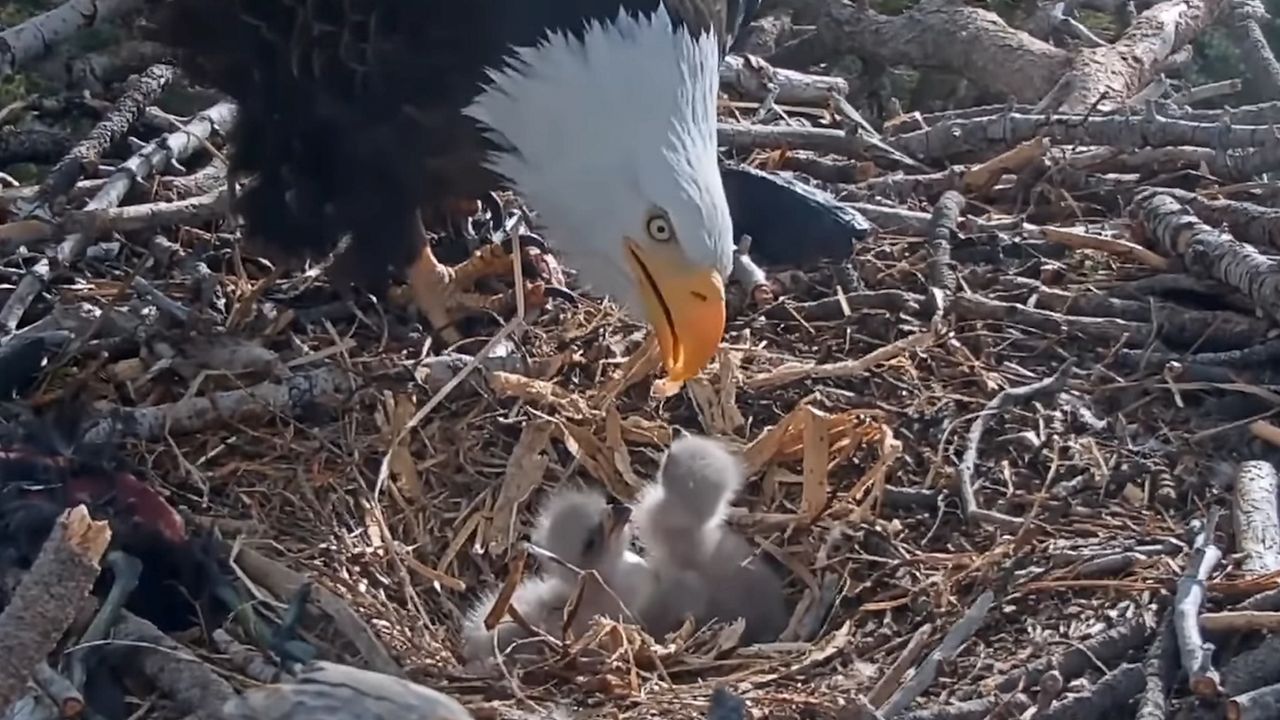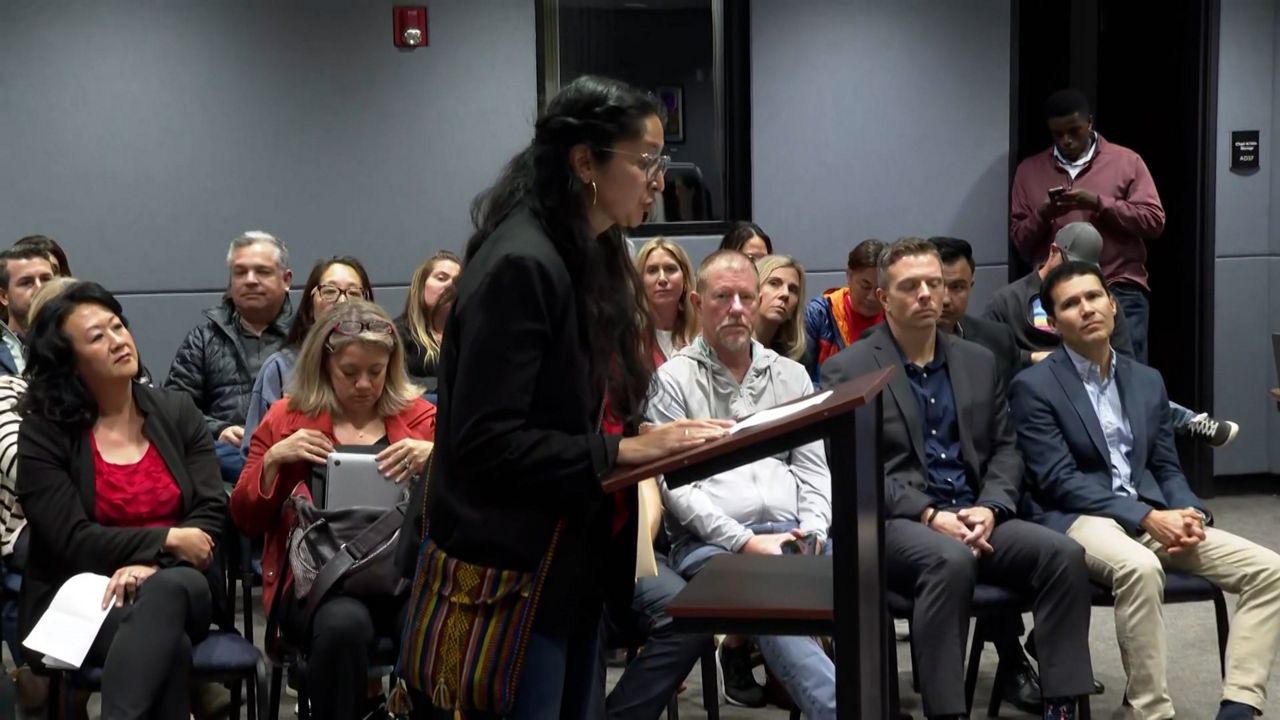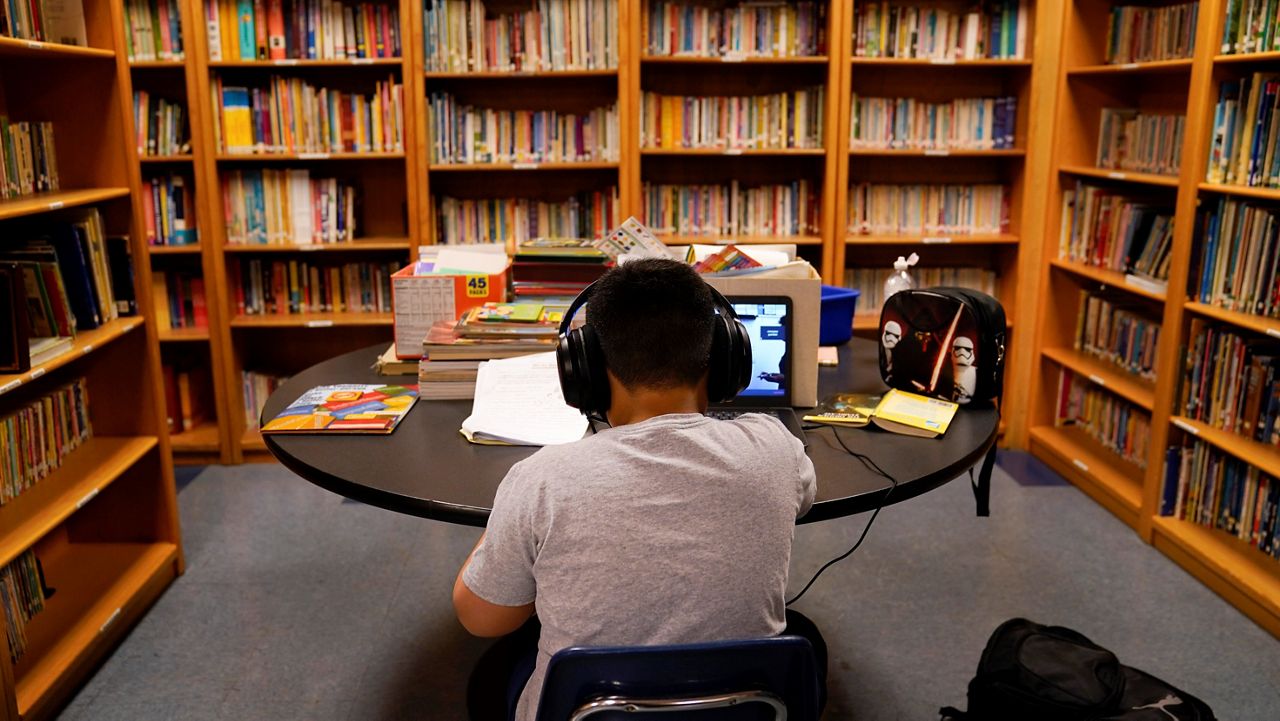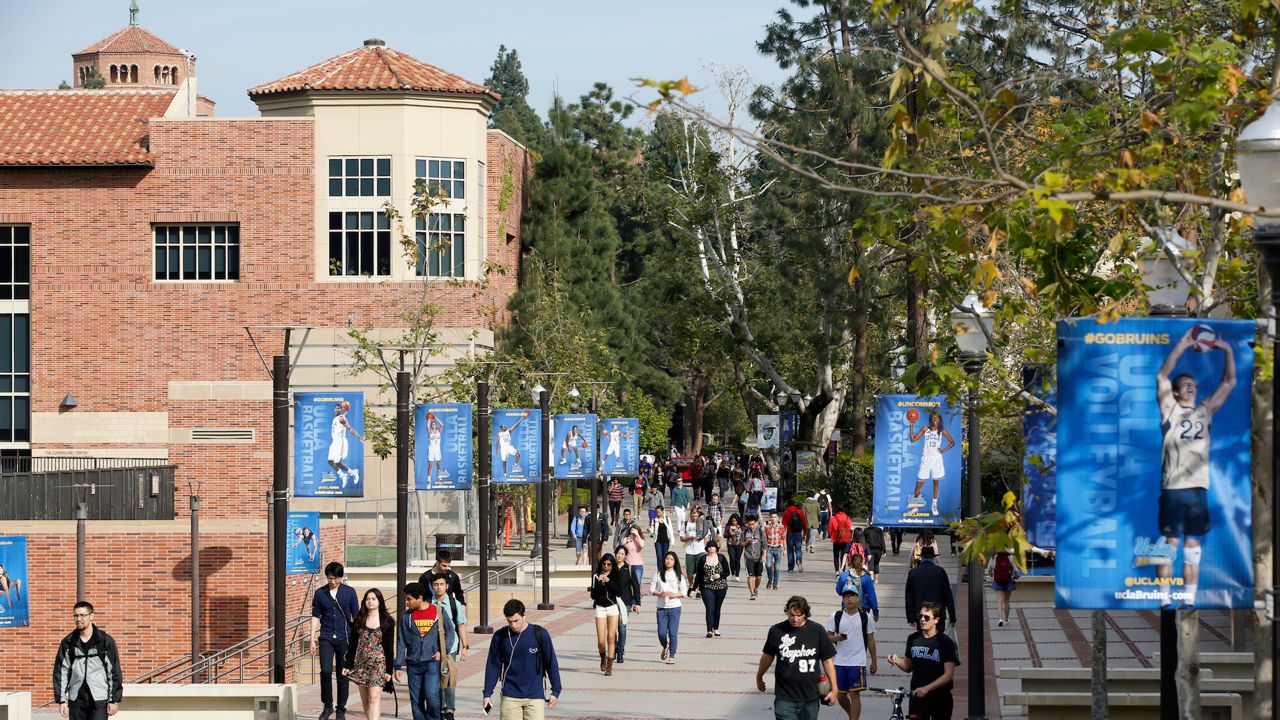SANTA CLARITA, Calif. — Writing takes practice, and so does kindness.
Harper Hartshorn is learning both. In December, for instance, she learned all about donating.
What You Need To Know
- The Learning Experience of Santa Clarita has a philanthropy curriculum for kids
- Students as young as 3 years old learn vocabulary works like kindness, empathy and compassion
- The school organizes a number of drives and fundraisers throughout the year
- Families learn how to discuss difficult topics such as homelessness and food insecurity with young children
“What you don’t use or you play with, you donate them,” Harper said.
Harper attends The Learning Experience of Santa Clarita, where about 150 kids a day from age 6 months to kindergarten are immersed in a kindness curriculum.
“Who remembers what it means to donate?” her teacher asked the class as little hands shot up enthusiastically.
Each month, the kids are introduced to a new concept led by two philanthropy characters, Grace and Charity, who appear everywhere from the toy box to story books.
Samantha Scalise is the director of the facility and is the first to admit that charity, empathy and philanthropy aren’t exactly typical pre-school vocabulary words.
“It’s big words for them and hard to understand sometimes,” she said. "But I think they’re really starting to understand that not everybody is as fortunate as they are, so we definitely have extras that we can share with people.”
Growing up, Scalise said she doesn't remember an emphasis being put on caring for the community — not at school at least. But it’s something that’s always been important for her personally. She used to volunteer several times a month on Skid Row. At previous jobs, she would enlist her colleagues and clients to make donations that she would then deliver to Skid Row or the San Fernando Mission.
This child care facility opened a year ago, and as it’s grown, so have Scalise's collections: food drives, clothing drives. They also adopted local families in shelters to provide them with gifts, gift cards, even in one case a laptop and printer so the mom would be able to work.
Scalise thinks families want to find ways to get their kids involved in volunteering, but they don’t always know what to do or where to do it. They also may not know how to discuss difficult subjects that even adults grapple with, so in a way, the curriculum is teaching the parents too, giving them the language.
“Yes, it’s sad that they might not have a roof over the head,” Scalise explained, demonstrating language for discussing homelessness with preschoolers. "But it’s comforting knowing that we can keep them warm because we supplied them with something, or we gave them food to fill their tummy for the day."
Scalise noted that COVID-19 has really driven home the importance of looking out for everyone but while she applauds the "we’re all in this together" attitude that’s emerged, she also points out that these problems are nothing new, and neither is compassion and community.
“We’ve always been in this together,” Scalise said. “We’ve always had homelessness problems, especially in LA County, and we’ve always had children not being fed or not being warm for the holidays. And it’s nice to now kind of bring more awareness to it in our younger generations.”
She hopes this generation of kids will remember the lessons as they grow out of their play clothes — “when you grow up and it’s too tiny, you donate them,” as Harper put it — and blossom into kind and caring adults.











